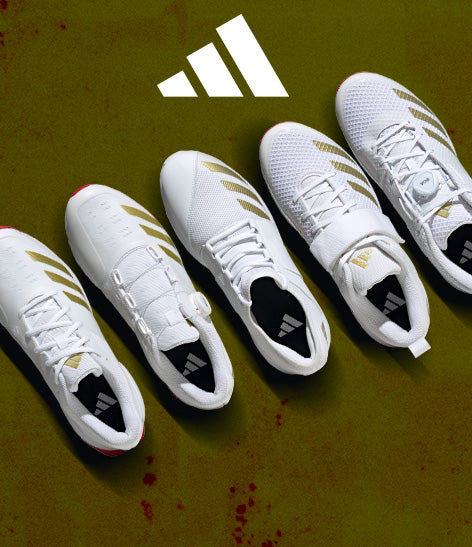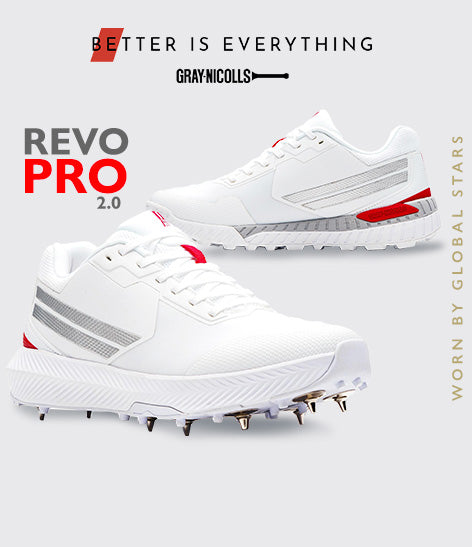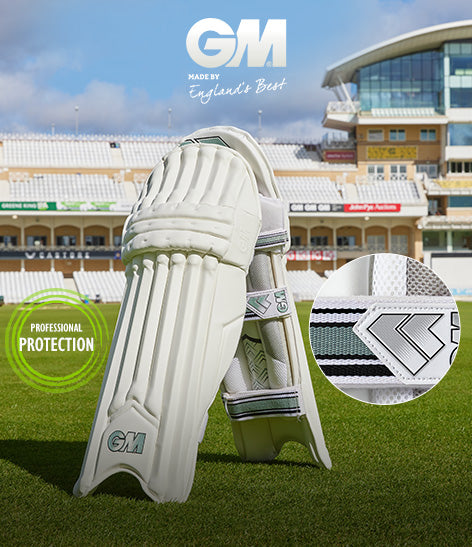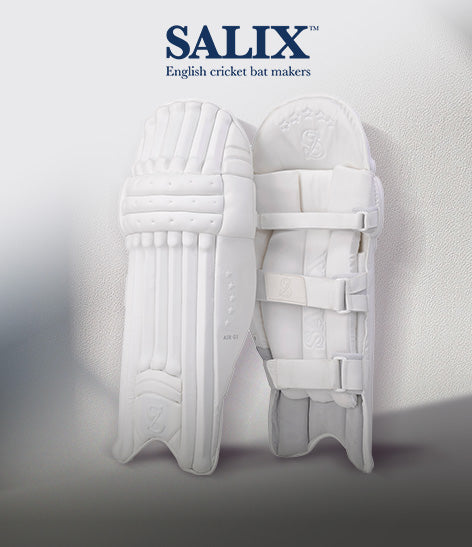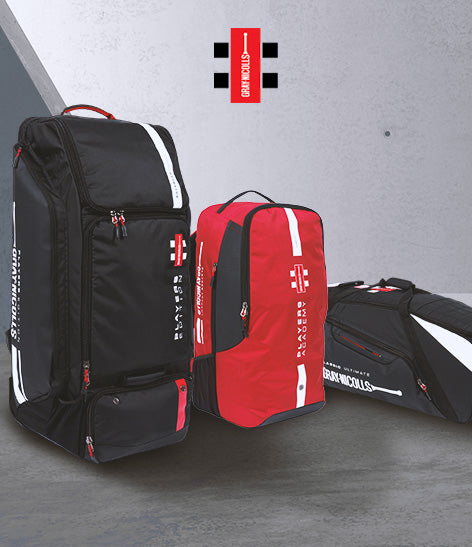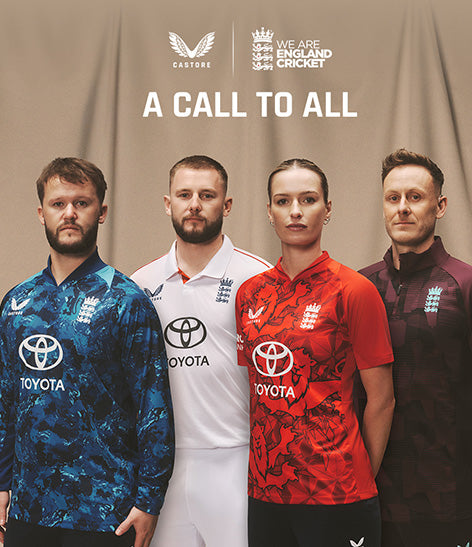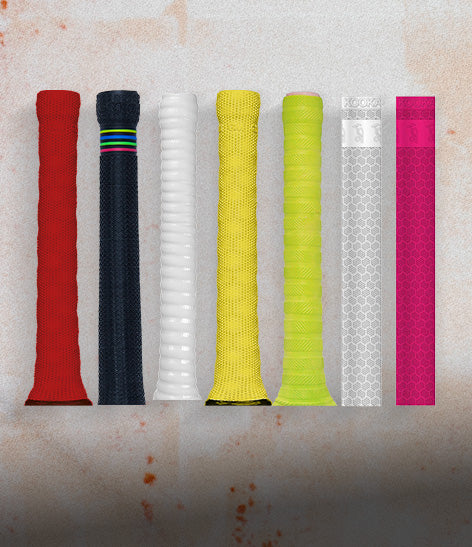
What to consider when buying a cricket bat
A cricket bat is a very personal tool and buying one can be quite tricky. However, with the right guidance, you can make a more effective choice specific to your needs when picking a bat online or in person.
Anatomy of a cricket bat
Handle: Sarawak cane laminated with rubber strips and wrapped in string and covered with a replaceable rubber grip. Comes in 3 distinct shapes, round – for bottom hand dominant players. Oval – more natural positioning of the bottom hand and reduces bottom hand dominance giving more blade control at point of impact. Semi-Oval – a softer oval shape that aims to give the best of both.
The Shoulders: The top of the blade, where the blade feeds into the handle.
The Splice: Where the handle is inserted into the blade. Each handle must be specifically shaped so that is fits perfectly into the blade it is chosen for.
The Blade: Made of willow which comes in 3 types.
1) English willow, which is the traditional and widest used because it gives the best performing bats.
2) Kashmir willow, grown in the sub-continent this willow is much denser, heavier, and longer lasting however but does not perform as well as English willow.
3) Alternative willow, grown in Europe and Canada. Performs more inline with English willow however it is very new and not widely used yet, meaning performance against English willow is not fully understood.
With a wide variety of Cricket bat makers and cricket bats on the market it is always good to get back to basics and understand what the key characteristics of the humble cricket bat are and what can really make a difference to your performance when choosing a bat.
Dimensions
The size and shape of bats have evolved over the era’s and so too has the wants and needs of the batter. One of the most notable differences between the bats of past era’s and the current, is the thickness of the edge and the spine and the desire for thicker and bigger bats. In October 2017, the MCC recognised that the balance between bat and ball hand been swayed heavily towards the bat and as such acted by introducing Law 5.7, further controlling the dimensions of the cricket bat which can be assessed using a bat gauge.

The Dimensions are as follows:
- Maximum blade length: 38inches or 96.52cm
- Maximum blade width: 4.25 inches or 10.8cm
- Maximum depth (or spine height): 2.64 or 6.7cm
- Maximum edge thickness: 1.56 inches or 4.0 cm

When talking about the dimensions of the bat we must also consider the dimensions of the batter as an incorrectly sized bat will have a detrimental effect on the batter’s technique or technical development for young players. On the physical side a bat that is too small can cause injuries to a batter’s back, knees, and ankles. A bat that is too big or too heavy, in the case of young players especially, it can cause injury to wrists, elbows and shoulders. To get a good idea of size the table below gives a basic guide to what size player should use what size bat.

| Height (Feet & Inches) | Recommended Bat size |
|---|---|
| Up to 3ft 9” | Size 0 |
| 3ft 9” to 4ft 2” | Size 1 |
| 4ft 2” to 4ft 5” | Size 2 |
| 4ft 5” to 4ft 7” | Size 3 |
| 4ft 7” to 4ft 9” | Size 4 |
| 4ft 9” to 5ft 1” | Size 5 |
| 5ft 1” to 5ft 3” | Size 6 |
| 5ft 3” to 5ft 5” | Harrow |
| 5ft 5” to 5ft 7” | Academy |
| 5ft 7” to 6ft | SH |
| 6ft + | LH or LB |
Weight
The most common weight of bat used today is between 2lb7oz & 2lb9oz which cover the light and medium categories. However, bats that weigh less than 2lb7oz in the ultra-light category, which were more common in past era’s, are becoming ever rarer due to the introduction of anti-scuff sheets, toe guards and of course the need for bigger and thicker bats. The next range up would be the heavy range coming in at 2lb10oz to 2lb12oz, again equally as rare as the ultra-light as bat making technology has improved to an extent that bat makers can provide bigger and thicker bats that weigh less. Lastly the extra heavy bat, affectionately known as the “monster” is a bat weighing 3lb and above. These bats are super rare because many manufacturers will only make them to order. A Cricket bats dead weight is effectively how heavy a bat is on the scales and obviously the heavier a bat is the stronger a batter will have to be, to swing the bat, time and strike the ball consistently. It is one of the core characteristics players from all eras will want to know when selecting a bat however, batters must always take in to account feel and balance not just dead weight. The weight of bat will have some impact on a player’s technique or vice-versa. For players who play off the front foot a lot and on slow low wickets a heavier bat, or bat with a lower balance, may be more suitable to help players hit through the ball and over top without having to swing harder and risk losing their shape. Batters who play on faster bouncier wickets who play more cross batted shots, rely on hand speed to play the ball as late as possible and stay on top of the bounce may favour a lighter bat or a bat with a higher balance. You may also want to consider your play style are you a Chris Gayle who sets out to hit every ball as far as you can, then something with a bit more mass is for you. Are you a Ricky Ponting playingall the shots,looking to manoeuvre the ball& playing dynamically off front or back foot with fast hands then you may want to consider a lighter Cricket bat.
Sweet Spot
The sweet spot, also termed the middle, is the area of the bat which gives the best ping, or rebound, when a ball hits it. Over the years as bat making has shifted into the modern era of sales with the purpose of catching the customers eye, and not just function, the concept of the sweet spot being directly linked to the profile is a misconceived one. Throughout the years if you look at any bat the sweet spot will be between a couple of inches up from the toe and an inch below the sticker line, anything inside the white border as you look at the image on the right. If you look at your current bat and your team mates you will see ball marks, hopefully inside the white border, but they will most likely be all in a similar place despite where you perceive to be the sweet spot, which most players believe is the highest point of the spine. Still not sure? Compare the bats Brian Lara used when he claimed the individual highest Test score world record, 10 years apart.

Profile Shape & Balance
Having dispelled the myth of a direct link between the sweet-spot and the profile it is time to answer the question, what is the point of different profiles, balances and how can they relate back to the player? This is positioning of the sweetspot and how a bat maker balances the bat to ensure there is plenty of wood where the ball hits the bat most often and is balanced to promote a specific feel when playing a stroke. There are 3 main types of profile;
1) High profile, where the thickest part of the swell and edges are further towards the handle. Perfect for back foot players, those who play on bouncy wickets or someone who is quite short.
2) Low profile, where the the thickest part of the swell and edges are nearer the toe. Perfect for players who prefer the front foot game, or those who play on lower slower wickets.
3) Mid profile, this is where the thickest part of the swell & edges are positioned to give players confidence of front or back foot.


So this leaves the the position of the highest point of the spine and edges, also know as the swell. As discussed above many people believe that sweet-spot performance and swell are linked however this is not the case. The swell on the bat is actually for balance. If you look at the swell it will have the most wood in it per square inch and therfore the most weight compared to any other part of the bat. Put simply the further away from the hands of the batter this area is, the lower the balance will be and the closer to the hands the higher the balance will be. The balance is very important to batters, it refers to the pickup of the bat and how it feels when the bat swings during a shot. A bat is like a pendulum and the batters hands the fulcrum. The lower balanced bats allow the bat to swing down from the back-lift, and as it does gathers pace, meaning the batter does not necessarily need extra force generated by the hands at point of impact to generate pace on the ball, and risk a loss of body shape. Then to the fastest and boucniest pitches in the world in Australia, where batters need to be able to stay on top of the bounce, play cross batted shots like the cut and pull. Having the balance closer to the hands helps batters to do this as there is a shorter distance between the sweetspot and the batters hands allowing for punchy shots withou losing control of the bat.

The Handle
The handle on a cricket bat comes in 3 distinct lengths and shapes, playing a big part in how a bat feels to the player and the balance. Starting with length, as measured from the top of the shoulders to the end of the handle, the standard length on adult bats is a short-handle (SH) and is generally 28.5cms or 11 inches this is ideal for batters between 5’7” and 6’0”. For those players over 6’ you have the option of a long-handle (LH) which is 2.2cm’s or 7/8” longer than a short handle allowing for a more natural stance. In the current era the super-short handle (SSH) has started to come in to favour and these are 2.2cm’s or 7/8” shorter than a short handle and allow adult batters who are on or just above or below the border between academy and full-size SH and still want a full adult weight b at or batters who prefer less room on the handle for their hands to move around.
The handle can also play a part in balance as there is always a small portion of the bat handle above the hands (the fulcrum) of the batter and this acts as a counterbalance. Some players have even started using extra layers of grip or weighted tape just on the end of the bat handle to act as a counterbalance and some bat makers now make bats with bigger pommels as pictured on the left.
This counterbalancing allows players to use bigger heavier bats while maintaining the pickup and balance of a lighter weight. Have a look at Joe Root’s bat for a great example!

- Willow and cane are naturally grown materials and no two bats will ever feel, perform or be the same, even if the blades have been made from the same tree, factors such as moisture content and pressing will be individual to each bat making performance impossible to discern even when picking a finished bat.
- Buy from a reputable bat maker. It sounds obvious but quality cricket bats are made using high-quality cane handles and English willow. Which are crafted by highly experienced and skilled bat makers so please make sure that you buy from reputable retailers or distributors or if you choose an independent company that you research them and if possible, visit them before you buy.


